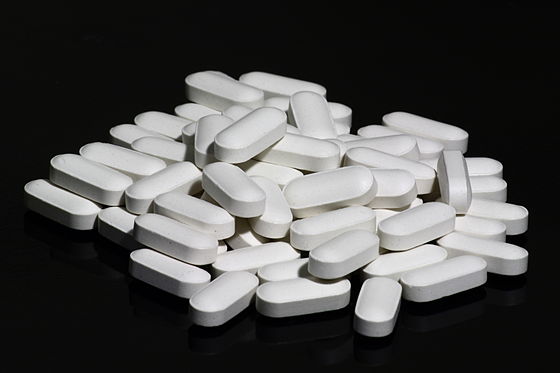
The Problem with “Mega Vitamin Packs”
The first and most obvious problem with old school mega-vitamin packs, is the outdated idea that you can’t have too many B vitamins. It is not as simple as just having the world’s most expensive urine (that bright yellow color is the B’s spilling over into the urine). Excess vitamins are a burden on the liver. This is why you will find people who get nauseous from vitamins, more so with people who take vitamins on an empty stomach. So we must appreciate that vitamin pills are not “natural” per se.
Here is an example of how Vitamin B-1 is made: “Thiamine is synthesized from acetonitrile, which is derived from acetic acid (from the distillation of wood). Acetonitrile is chemically combined with ammonia forming the thiamine molecule. This form of thiamine is acidic (ph 2.7 to 3.3).”
This is how Vitamin B-2 is made: “Produced by aerobic fermentation (submerged culture with continuous agitation and aeration) using a yeast-like fungus (Eremothecium ashbyii) in a medium of D-ribose (from glucose) or various other mediums containing carbohydrates, vegetable oils and amino acids. The riboflavin is then extracted from this fermentation liquor with solvents or reducing chemicals. Riboflavin is responsible for the red-orange color of the B-complex. All yeast-like residues are removed in the extraction step.”
This is an example of how all B-vitamins are made. We should not buy into the illusion that the “health food store” has a more natural vitamin than the pharmacy. All vitamins are white powder isolates made in pharmaceutical plants. This means the liver recognizes them as chemicals and must process them before letting them loose in the body. Now let’s look at what amount of B’s one would find naturally occurring in the human diet.
The R.D.A. in America recommends 1.5 mg of B-1 daily and 1.7 mg of B-2. While it is acknowledged in the supplement field that these recommendations are too low, the reason they are set low is based on what food actually provides. For example:
| Vit. B-1 | Vit. B-2 | |
| 2 slices of whole wheat bread | .18mg | .1mg |
| 1 oz Cheddar Cheese | .11mg | .02mg |
| 2 slices Turkey Roll | .05mg | .16mg |
| One Apple with skin | .02mg | .07mg |
| ½ cup Potato Salad | .1mg | .08mg |
| Total | .46mg | .43mg |
Point being, here is an example of an average lunch, totaling less than half a milligram each of vitamin B-1 and vitamin B-2. Multiply this by 5 meals (to be generous) and we are averaging less than 2.5mg of each of these two example as a daily intake. So 25mg of either of these 2 B vitamins is basically akin to eating 10 days worth of food intake at one meal. Can we seriously advocate taking 4 times this (100mg per day)?
The body is simply not made to absorb huge levels of nutrients at one time. In fact, we advocate people don’t take vitamins every day, as it has been found that if we are too generous with the body it gets sloppy. High vitamin intake causes the body to not store or utilize nutrients as well as it can, as it gets over-confident that the environment is rich with food. Skipping week-ends or taking pills every other day, forces the body to be more efficient with its’ resources.
We must also appreciate that Timed Release is considered a passé technology, as it was discovered (some time ago) that vitamins are picked up in the upper intestinal tract, whereas pills inevitably sink to the lower intestinal tract. That is why professionals always recommend B-vits be taken in divided doses throughout the day.
Time release has also been considered of dubious value when applied to regular vitamin C. Since ascorbic acid is so acidic that chewable (non-buffered) vitamin C is worse on the teeth than chewing sugar cubes, it has been suggested (in “Life Extension”) that this pill will ultimately sink to the lower intestinal tract, and there drip acid for 8 hrs, potentially ulcerating the lining of the gut.
A few other common problems with ordinary multipaks should be addressed. Is it in a clear container? Since light can be as damaging (or more, in the case of fats) as oxygen, to nutrients, the container should shield the nutrients from both oxygen and light. A common problem in almost all multi-vits is the use of synthetic Beta carotene. Unless the product clearly indicates that B. carotene is from a natural source, accompanied by a list of the rest of the caratenoid family, then it is synthetic. Synthetic B. carotene was found in a Finnish study to be worthless. In fact those on the synthetic B. carotene had marginally more cancer than those on the placebo.
(Our NutriPods products use natural beta carotene and follow the principles outlined above.)
The bottom line can be summed up in a phrase that is widely applicable to most of modern living: “More is not Better.”